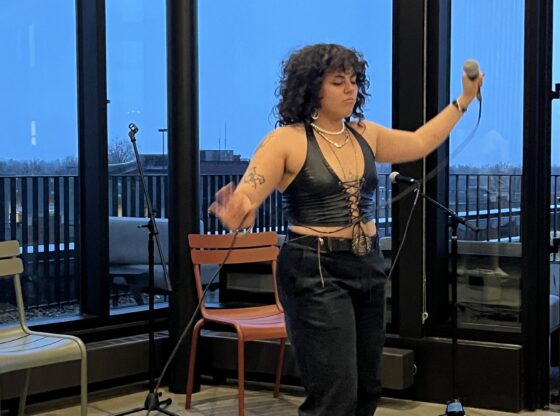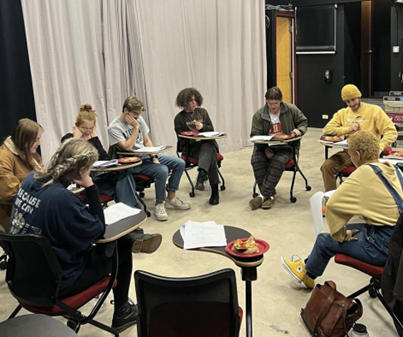The Columbine High School Massacre is a black spot on the history of the U.S. The tragedy, which occurred in April 1999, continues to spur debates of gun control, violence in the media and school bullying. People from the nation’s president to parents at the dinner table have had discussion after discussion, trying to find someone to blame for the event and those like it. But what people most often forget is that while the shooting held a national context, it also held, and continues to hold, a local one.
Unfortunately, Columbine was not the last shooting to occur in Colorado. With the national frenzy surrounding each one, it can be difficult to remember that at the center of it all are communities who are forever altered.
On Sept. 25, the DU Department of Theatre’s production of “Columbinus,” directed by senior Thomas Lynch, a theatre major from Littleton, Colorado, reminded the audience that the shooting was not only a matter of gun control or violent video games, but also a matter of human beings.
The stage reading began with a single chalkboard at center stage, the word “Columbinus” written on it in all caps, accompanied by nine chairs for each character. Each one was a stereotype, with names like “Perfect,” the pretty girl everyone knows and likes, or “AP,” the straight-A student who isn’t so great at sports. Two characters immediately stood out from the others: “Freak” and “Loner,” played by sophomore theatre majors Daniel Crumrine and Isaiah Adams, didn’t quite fit —not in a neat stereotype and not in their group of classmates. The two are tormented because of it.

The play gets darker as Freak and Loner get angrier, and in Act 2, the outcasts are revealed to be the Columbine school shooters, Eric Harris and Dylan Klebold. They are both shown coming to terms with their decision to execute their attack, portraying both their rage and what seems like hesitance. In this act, much of the dialogue is taken directly from The New York Times interviews with victims and parents, as well as tapes that the real Harris and Klebold made chronicling their plans. The production’s climax was a dramatic retelling of the shooting, with the majority of the lines taken straight from the victims’ firsthand accounts.
The cast was wonderfully strong, seamlessly moving between the fiction of the stereotypical characters to the reality of the victims’ interviews. Crumrine and Adams were all at once sad, terrifying and despicable in their roles, doing a brilliant job of creating palpable tension in the audience. But what the production does best can be summed up by its director, Thomas Lynch. At the talkback after the show, Lynch mentioned the play’s intention was not to preach to the audience.
“The purpose of this play is to ask why this tragedy happened, and why shootings continue to happen. Though this is an extremely sensitive topic for people in Colorado, I thought producing this staged reading would be an effective mode of sparking discussion about the truth of this story and offer some insight into why this happened.”
The show does not push the story in one direction or another, urging the audience to feel sympathy for the shooters or hate the parents that raised them. Instead, it explores all sides of the story, opening the topic up for discussion.
“Columbinus” powerfully ends with each actor quietly walking up to the chalkboard and writing the names of the victims one by one. The scene brings the play’s message home: that beneath the shuffling of blame, beneath the national news coverage, beneath labels like “Freak” and “Perfect,” these were people. They got up every morning for school. They worried about tests. They struggled with fitting in. They had friends. They had parents. They were a community.











